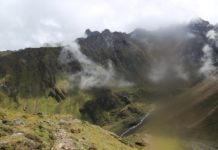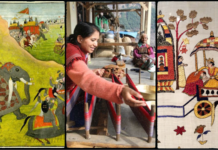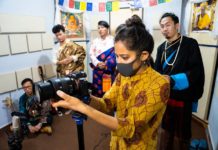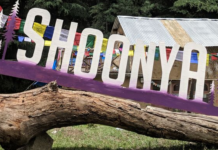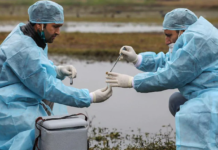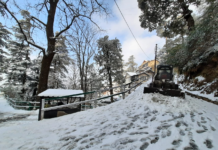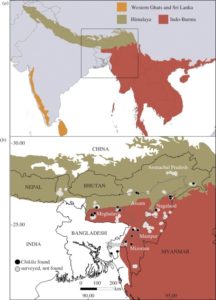
The Northeast of India has a major proportion of the forest cover of the country and homes a variety of species. In fact, it is a part of the Indo-Burman and Eastern Himalayan Biodiversity hotspots, two of the 25 hotspots in the world. Protecting and conserving this is a priority and for the past 28 years, an organization in Assam has been working relentlessly for this cause.
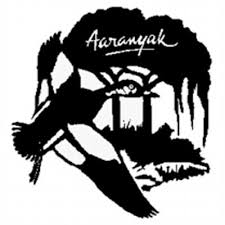
Aaranyak is based in the heart of Assam, Guwahati, but their work area stretches all through the East and Northeast of India undertaking some major forest areas with many endangered species. The organization started in 1989 when a group of environment enthusiasts filed a petition against the State Government to protect the white-winged wood-duck locally called Deo Hah from poachers. Since then Aaranyak has adapted projects to protect many other species like the Greater Adjutant, Bengal Florican, tigers, one-horned rhinos and the latest project of conservation of Gangetic dolphins. Over the years, it has joined forces with the Government and the Forest Department to work towards their common mission.

Aaranyak has many divisions working for the common goals. Acknowledging the role of the local communities Aaranyak has a Conservation and Livelihood Division. They often hold meeting and events for awareness and to build their self-resilience. The organization sympathizes with the local communities neighboring the protected areas and their issues. They believe that local stewardship is the key to the effectiveness of conservation programs. Thus with these believes the NGO works with the local communities to improve their socioeconomic status and minimize their dependency on the forests.
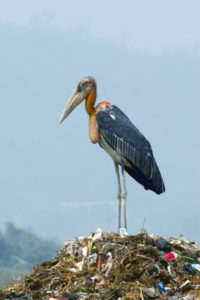
Another division is the legal division. Since the first project of Aaranyak, the white-winged wood-duck, they have understood the importance of legal tools in conservation and its awareness. In that case, the main reason for the decline in the number of the species was that the Government leased out fisheries inside the Dibru-Saikhowa sanctuary violating the Wildlife Protection Act. Thus the objective of this division is to make aware the police and forest personals of the various laws stated for wildlife protection for their better implementation. Plus, they have also arranged six Belgian Malinois dogs, known for their prey drive, along with its handlers in the rhino populated areas to keep a check on poachers and this has also resulted in quite a few arrests since then.
It has a geospatial technology division and a media production and communication division. But what stands out is their Wildlife Genetics Division (WGD) marking the first genetic laboratory at the NGO level in the country. Approaching the issue scientifically, WGD has not only researched within the borders of India but has extended along the Himalayas and beyond. In collaboration with Eijkman Institute for Molecular Biology, Jakarta, IRF and WWF it has studied the population status of the Critically Endangered Javan and Sumatran rhinos in Indonesia. Amongst some its other milestones, WGD successfully developed protocols for genetic individual identification of Greater One-horned Rhinos from dung samples, thereby opening greater possibilities of undertaking genetic population monitoring of the species in its natural habitat.
Under its Water Climate and Hazards Division (WATCH) the organization studies the river basins of the region and keeps a record of the flood and erosion hazards along with the impact of the numerous water projects. The Community Based Flood Early Warning system implemented by this division won the organization the Lighthouse Activity Award of the UN Framework Convention on Climatic Change (UNFCCC) in 2014.
Aaranyak is not only an environmental organization but a social organization as well that strongly believes in gender equality. Under its community awareness, Aaranyak has adapted empowering women as an objective as well. It has formed several self-help groups of women encouraging and outsourcing their home made products. Not only are women a major part of their beneficiaries but there are many strong headed women working with them as well. Alolika Sinha and Binita Baruwati are inspirations to the youth to work in the wilderness for the greater good.
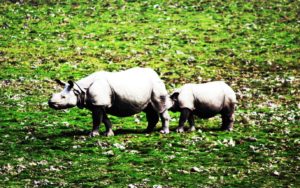
In 2010, Aaranyak became a member of the International Union for Conservation of Nature and Natural Resources (IUCN) and in 2012 the Government of India conferred it with “Indira Gandhi Paryavaran Puraskar”. In the 19th of March, 2017, they recorded 102 rhinos in Pobitora Wildlife Sanctuary making it the highest density of one-horned rhinos thus setting another milestone. Aaranyak, along with many national and international organizations, is guarding the environment and the people around it for years. True to its name, it is an organization ‘of the forest’.





